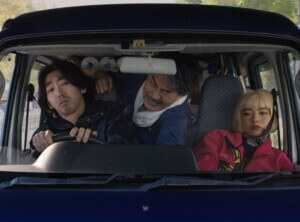The recent 2014 Tribeca Film Festival screened a remarkable number of films on displacement. People were displaced from their homes—often forced but sometimes voluntary—for financial reasons, discrimination, landlord harassment (or irritation), and natural disasters. In the film Below Dreams, which takes place in New Orleans, a character says “Everybody needs a room.” Here are a few seekers.
An arts colony of puppeteers, performers, acrobats, and magicians live in the Kathputli Colony in the Shadipur neighborhood of central New Delhi in a 50-year old shanty town built on government land. Tomorrow We Disappear follows Puran the Puppeteer, Rahman the Magician, and Maya the Acrobat as their way of life is threatened. The land they live on has been deeded to a developer who plant to build Raheja Phoenix, the city’s tallest skyscraper. What distinguishes this population is that they are working artists, not beggars. It’s a universal problem—think of the evicted residents of Carnegie Hall studios.The poignancy of their problem and the limited solutions offered are palpable.
A true New York real estate and relationship story is Love is Strange (screenshot at top), where a long-time gay couple (John Lithgow and Alfred Molina) marry, promoting the firing of the main breadwinner by the Catholic school where he teaches music. Forced to sell their beloved apartment, which they bought when it went coop after decades of renting, they wind up with a mere $17,000 after the 25 percent flip tax, broker’s fee, and sales tax, so they wind up living separately, bunking in with friends and family, in very unhappy circumstances. They apply for subsidized housing, instructed to do so directly to developers for low-income apartments in mandated set-asides awarded by lottery (they qualify by making less than $20,000 between the two). By chance they score a rent-controlled $1,500/month apartment on Morton Street, but by then it’s too late for them.
One Year Lease (winner Best Documentary Short) chronicles the short-lived stay of a gay couple in a Manhattan apartment they’ve lovingly fixed up. The building is owned by a persistent, unintentionally funny landlady who lives directly above, and who we only hear on the many voicemail messages she leaves. First friendly, if intrusive—she worries about their cat, wants their discards—she grows more irritated as they clearly ignore her requests/demands. They flee after one short year due to nudging.
Filmmaker Casimir Nozkowski grew up at 70 Hester Street, a former Roumanian synagogue (Congregation Shaarey Shamoyim) cum illegal whisky still cum raincoat and plastic shower curtain factory that his artist parents, Thomas Nozkowski and Joyce Robins, rented in 1967. The 1860-1880 (date uncertain) building was sold in 2012 forcing his parents to vacate. The two-storied apartment, with the railed upper balcony floor for Jewish women worshipers and the lower floor for men, round stained glass star window and skylights, is filled with art, and is a loving reminder of a rich, happy life lived here. At least the building is slated to become gallery and cafe space.
Of Many is the story of a rabbi and an imam, both at NYU, who work together to catalyze multi-faith collaborations between their student worshipers. The safe space they find is rebuilding homes after natural disasters in New Orleans and Joplin, Missouri: disaster knocks down the house, and then it breaks downing barriers. The Gaza strip, however, proves more difficult.
Also of interest is Beyond the Brick: A Lego Brickumentary. In addition to Bjarke Ingels talking about his Lego Towers (exhibited at Storefront) and his upcoming Lego Museum, we also meet Adam Reid Tucker, a self-proclaimed “failed architect” who is now the firm’s architectural artist. On his own steam, he crafted a architectural landmarks in Legos that was noticed by the firm which decided to create sets for sale called Lego Architecture. They now include the Willis Tower, John Hancock Center, Empire State Building, Guggenheim Museum, Fallingwater, Sydney Opera House and more. Other Lego projects that focus on the built environment are the MIT City Scene Project which is “visioning” Cambridge, Mass, and Zoom, an educational mapping program being used in Brazil and elsewhere.
A few films make use of interesting architectural settings: In Order of Disappearance features a Modernist cast-concrete and stone house in Norway as the home of a mob boss (what is it with Modernism as a symbol of villainy?) with armchairs of molded women’s faces pointing outward and a room filled with white hand sculptures, which is contrasted with another mob boss’s headquarters in a prop rental house full of chandeliers, wooden bureaus, vitrines, and tables. A nearby unnamed city has new skyscrapers with different building tops, some stepped, some sloped, set against a snowy white backdrop.
Incident Urbain features two men talking about the Dominique Perrault Building, the Biblioteque Nacional, as they wander through it. There is much discussion about the use of glass and the cinema Perrault was forced to build under protest, while the film intercuts between architectural models and the built buildings.
Back home, Match begins with Patrick Stewart’s dance teacher giving instruction at Diller, Scofidio + Renfro’s Juilliard rehearsal rooms at Lincoln Center. He goes home to Inwood with shots of an arched subway station entrance, a flight of pedestrian steps, and rooftops vistas of the George Washington Bridge.










